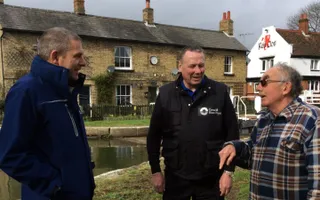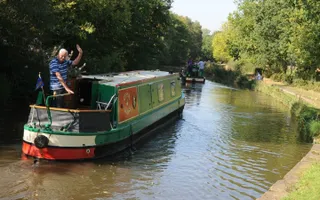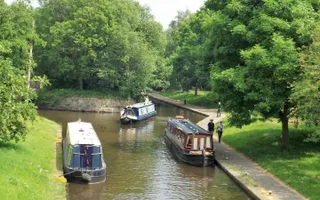I was asked if I would talk about my chronic kidney disease, dialysis and how this impacted on boating life with my husband, Chris. I had a kidney transplant (I have named my transplanted kidney ‘Benji') in November 2019, and in the same month qualified for assisted housing in the area where we were moored. We were awarded a house the same week I got Benji. However, I digress from my boating story.
The beginning
We moved aboard narrowboat ‘Gracie' in August 2013. We initially had a mooring in a marina but that lasted just six weeks because we found it too restrictive. Instead, we continuously cruised around the North West until January 2016, when I went to the doctor with a chest infection, cramp pains in my arms and legs, and general exhaustion.
Two blood tests later and my kidney function was found to be just 5%, compared to the normal function range of 65-70% for people my age, in their fifties. I was admitted to Manchester Royal Infirmary under the care of the renal team. I had lots of tests, scans, x rays and renal ultrasounds, but it was clear I would need to start dialysis as soon as possible.
There are two sorts of dialysis - peritoneal dialysis and haemodialysis. Both are time consuming and require lots of storage. Peritoneal dialysis is always done at home, which would have been much more challenging on our narrowboat. So, haemodialysis at the renal unit was, for me, the better option.
Dialysis and boating
When I was first admitted to hospital, I telephoned the Licence Support Team at the Canal and River Trust. They were wonderful, coming out to us with the forms we needed to stay moored where we were while I was in hospital. I finally came home after 21 days, having had a chest line inserted on 10 February 2016 and starting haemodialysis three days later at a unit in Stockport.
There was never a thought that we would move off the boat. I decided on self-care (carrying out my treatment myself), with a view to getting a smaller dialysis machine on the boat in the future and although this didn't happen, the self-care experience at the renal unit was invaluable. Subsequent to my training, another boater I know got a small haemodialysis machine on his boat, but he is on shore power, which makes it really easy. I was in fact going to self-care refresher training, preparing me for bringing a machine home to our boat, when I got my transplant call.
An end to cruising
We got a reasonable adjustment on our cruising pattern after five months moored in one place, but it soon became apparent that the NHS doesn't work properly if you cruise around. When a long-term towpath mooring came up in New Mills on the Peak Forest Canal, we took it, but we missed being able to cruise around. Being moored permanently in one place, with only two days a week when we could cruise, made it difficult because we had to be back in New Mills for dialysis transport.
Having a mooring certainly made transport easier, and when the neighbouring marina took over the management of the mooring, we then had a local address. This proved invaluable when my husband was diagnosed with chronic obstructive pulmonary disease and moving off the cut became inevitable.
Support from the Trust
The one thing I would advise people in a similar situation to do is to phone the Trust as soon as possible when you discover you've got a problem. If they know, they can put steps in place. The Equalities Questionnaire form is designed to assist in deciding what to allow. Although if you request something and it's reasonable, they will always try to assist.
As with most things, stay positive, communicate and look for solutions together with the Trust. My husband's illness and my transplant meant we couldn't stay aboard as our health wouldn't allow it, but we had over six fabulous years, and the people we met and friends we made have enriched our lives.
Stella is currently our Friends representative on our National Council.







